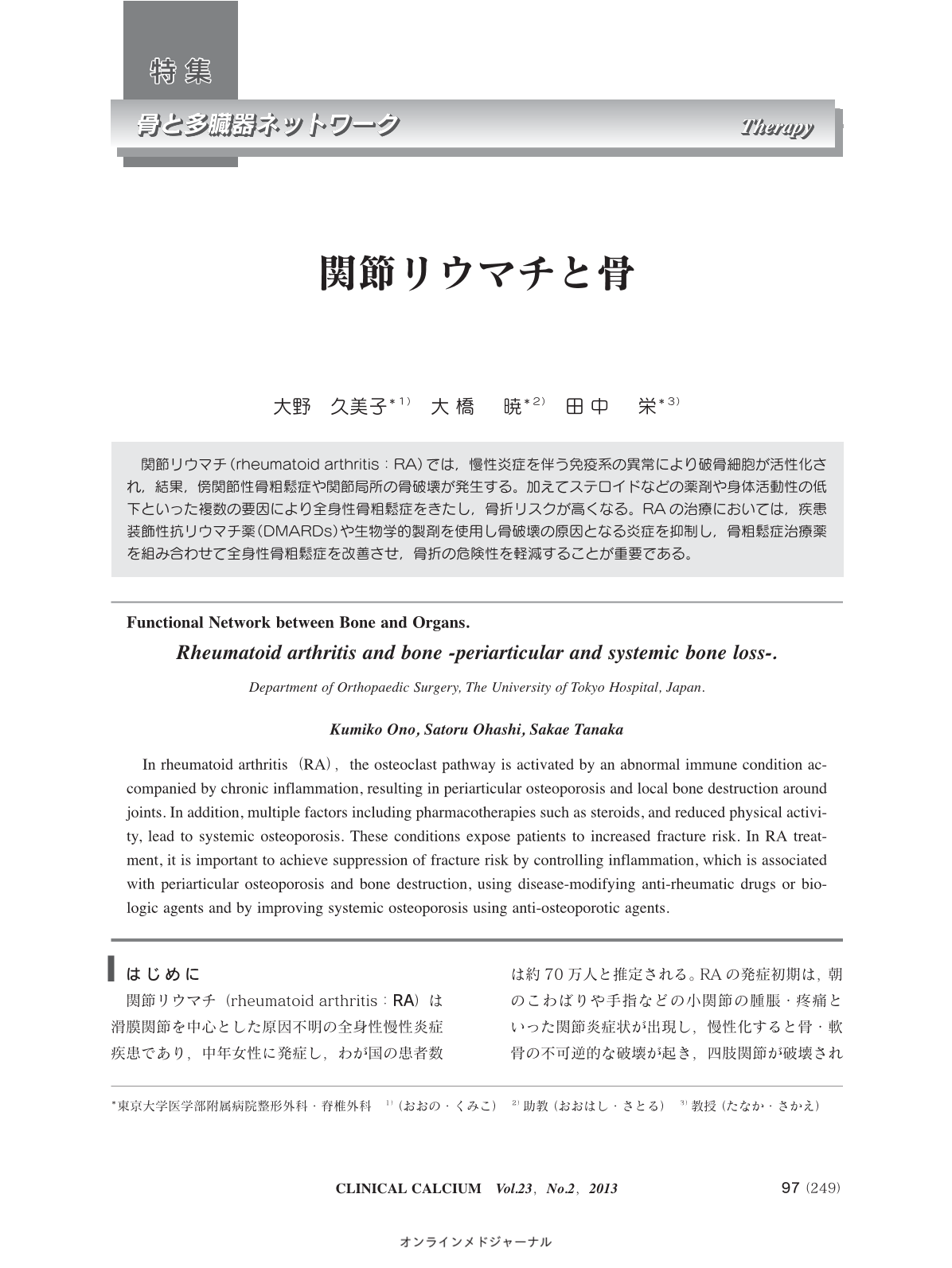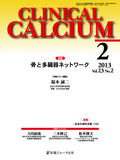Japanese
English
- 有料閲覧
- Abstract 文献概要
- 1ページ目 Look Inside
- 参考文献 Reference
関節リウマチ(rheumatoid arthritis:RA)では,慢性炎症を伴う免疫系の異常により破骨細胞が活性化され,結果,傍関節性骨粗鬆症や関節局所の骨破壊が発生する。加えてステロイドなどの薬剤や身体活動性の低下といった複数の要因により全身性骨粗鬆症をきたし,骨折リスクが高くなる。RAの治療においては,疾患装飾性抗リウマチ薬(DMARDs)や生物学的製剤を使用し骨破壊の原因となる炎症を抑制し,骨粗鬆症治療薬を組み合わせて全身性骨粗鬆症を改善させ,骨折の危険性を軽減することが重要である。
In rheumatoid arthritis(RA),the osteoclast pathway is activated by an abnormal immune condition accompanied by chronic inflammation, resulting in periarticular osteoporosis and local bone destruction around joints. In addition, multiple factors including pharmacotherapies such as steroids, and reduced physical activity, lead to systemic osteoporosis. These conditions expose patients to increased fracture risk. In RA treatment, it is important to achieve suppression of fracture risk by controlling inflammation, which is associated with periarticular osteoporosis and bone destruction, using disease-modifying anti-rheumatic drugs or biologic agents and by improving systemic osteoporosis using anti-osteoporotic agents.



